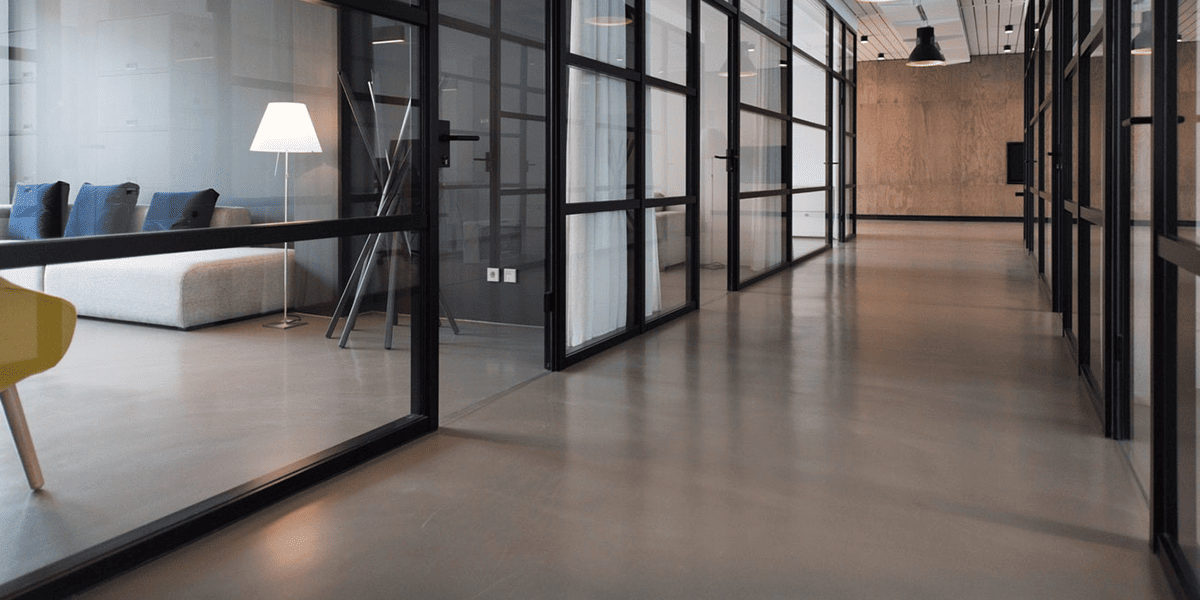[oc_spacer height=”15″]Companies such as Microsoft and LinkedIn have attracted a lot of attention with their creatively designed offices and innovative workspace cultures. Here you can discover what makes the workspace of the future – apart from state-of-the-art infrastructure – and which three steps have to be considered during implementation.
Leading companies, as well as smaller businesses have recognised that our world of work is fundamentally changing. A Sipgate study found that the workspace of the future is perceived as one of the most important challenges in companies, ahead of topics such as staff, production and sales, and in second place only after IT security. Only every seventh interviewee indicated that they had not yet thought about the next generation of workspaces.
Palo Alto or Munich – new concepts are created everywhere to trial how demands of employees, employers as well as implications of technical innovations and digital change can be reconciled. Here the aim should be to create a new ecosystem of working, in which people use new technologies to jointly develop solutions. An essential factor is the workspace. However, this not only refers to the employers‘ head offices. The term also includes the location from which people work as well as the utilised infrastructure and resources; in addition the term refers to collaboration in teams as well as the company and management culture.
The workspace of the future is therefore a combination of many, even partly abstract factors. Three steps can serve companies as an orientation in the long process towards a new way of working.
1. Adapt Operational Structures to the Changing World of Work
Ten years ago in his book “Tomorrow I will get to work later“, Markus Albers proposed more independence in permanent employment. Today he warns from mixing new with old working structures. In an interview with t3n – digital pioneers magazine he urged that for example increased flexibility, such as answering emails until late in the evening while at the same time maintaining an old style structure of office presence and meeting cultures do not agree with each other. They only lead to an often bemoaned high workload of employees. Frustration and resignation – even relating to the change of the work culture – sets in as employees cannot see any added value, while productivity and satisfaction also suffer.
Therefore, before any technological investments are made, outdated company structures have to be broken up. Almost two thirds of companies have developed a firm strategy for new working and mobility concepts as Sipgate discovered. Their primary goals are flexibility, agility, productivity and increase of staff satisfaction.
2. Employees‘ Demands on the Workspace of the Future
This clarifies the objectives of employers, but what do employees want from the workspace of the future? According to research by Kienbaum, top of the list is the ability to organise their working time independently. Employees would like attractive part-time work solutions, sabbaticals or event driven time off. According to Sipgate, while 60% of female interviewees would like to have the option to work from home, location-independent access is the most important aspect for men. Currently around 79% feel that their workspace is “still far from“ or “only to some extent“ as they would image their next generation workspace.
Flexible working time models demand a certain degree of trust between employees and employers as well as forward planning. However, home and remote working scenarios can be easily technically implemented, in particular with cloud-based solutions.
3. Future Working – Setting the Technical Groundwork
After structures have been modernised and attractive working time models are ready to go, then focus has to shift to creating the technical requirements for an innovative workspace.
In a study of crisp Research in cooperation with Samsung only 40% of decision makers in companies indicated that they are able to keep up with technological progress, while others felt they had completely lost pace and now do not identify themselves as recipients of new technologies.
However, market maturity of many products is more than sufficient to build a secure, immediately usable and long-term digital workspace architecture. Thanks to highly secure solutions, such as the oneclick™ platform for the provisioning, as well as distribution, of software applications and data, ensure that companies no longer have to worry about data security when offering location or device-independent working. The increasingly optimised combination of new end devices, collaboration and office solutions, operating platforms as well as management and security solutions enable innovative workspace solutions to be tailored to the requirements of any organisations – even without in-house specialists.
Image Source:
- Image 1: sunday_digital @ Unsplash.com
Sources:
- https://newworkblog.de/2016/10/18/new-work-und-die-neuen-arbeitsraeume-was-uns-die-deutschland-zentrale-microsoft-und-das-neue-headquarter-von-linkedin-ueber-die-arbeit-der-zukunft-sagen/
- https://www.wiwo.de/studie-zu-new-work-wo-gehts-hier-bitte-zum-arbeitsplatz-der-zukunft/20194508.html
- https://www.computerwoche.de/a/digital-workplace-wer-nicht-wagt-der-nicht-gewinnt,3545013?utm_source=Nach-Artikeltyp_1,30&utm_medium=RSS&utm_campaign=RSS-Feeds
- https://www.kienbaum.com/de/blog/was-bin-ich-meiner-firma-wert
- https://www.kienbaum.com/de/trends/newwork?msclkid=d689dc0e57811bd069c987357b3cfbba&utm_source=bing&utm_medium=cpc&utm_campaign=KMC%20%20New%20Work%20(Trend)&utm_term=new%20work&utm_content=New%20Work&msclkid=d689dc0e57811bd069c987357b3cfbba&utm_source=bing&utm_medium=cpc&utm_campaign=KMC%20-%20New%20Work%20(Trend)&utm_term=new%20work&utm_content=New%20Work
